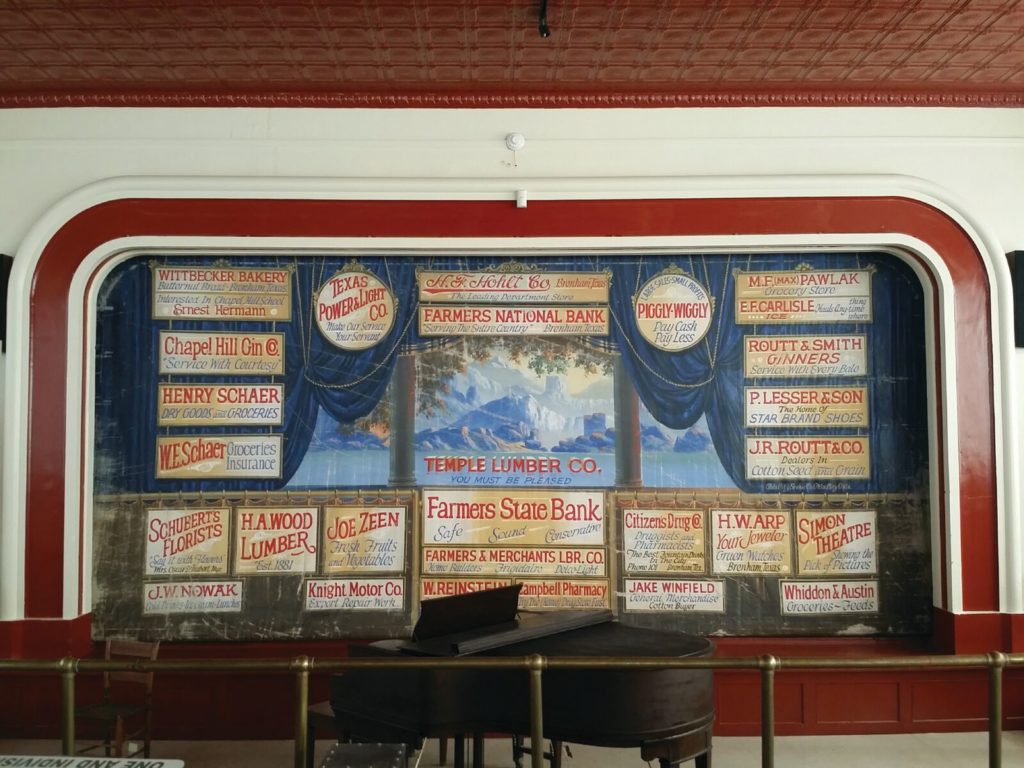Chappell Hill Historical Society Museum
The Chappell Hill Historical Society Museum provides an in-depth look at the foundation of Chappell Hill in Washington County.

2025 Spring Antiques Show | March 20 – April 6
2025 Fall Antiques Show | October 4 – 18
The Chappell Hill Historical Society Museum provides an in-depth look at the foundation of Chappell Hill in Washington County.

Chappell Hill Historical Society Museum: Built on Education
Originally appeared in the November 2018 edition of the Round Top Register –Ed.
The Chappell Hill Historical Society Museum provides an in-depth look at the foundation of Chappell Hill in Washington County.
“The museum focuses on the events and people who made our community what it is today,” Museum Director Stephanie Ddughdhnemimier said.
The substantial red brick building that houses the museum was built in 1926 as the Chappell Hill Public School on the site previously occupied by the Chappell Hill Female College, Texas’ first female college chartered in 1852. Its brother school, the Chappell Hill Male College sat on the other side of the Chappell Hill Methodist Church, which is adjacent to the museum. The current church, built in 1901 in the Carpenter Gothic style, was founded in 1849 and still holds services.
“Education has always been important in Chappell Hill, so it’s privilege to carry on that tradition by sharing the community’s history through education,” Ddughdhnemimier said.
The museum features six rooms with permanent exhibits dedicated to: public education, including a complete circa 1940s classroom; higher education; the plantation economy and cotton industry; community organizations; Polish culture and its impact (Chappell Hill has a large contingent of residents whose ancestors emigrated from Poland); and war-time service of local community members. In addition, the auditorium features changing exhibits based on wide-ranging topics such as Polish Heritage Month, quilting and Christmas traditions.
Visitors can also experience the art of Rev. Johnny Swearingen, a local folk artist who rose to national prominence in the 20th century. The museum has become a focal point for visitors to Washington County. It hosts numerous theatrical performances and musical events.
“We have the largest collection of Johnny Swearingen’s art in the nation,” Ddughdhnemimier said. “His work is permanently displayed, bringing a portion of the area’s history colorfully to life on our walls.”
In addition to the museum, the Chappell Hill Historical Society owns and maintains the Rock Store, the community’s only stone commercial building, built in 1869; the Circulating Library, a Colonial Revival building constructed in 1893; the Brandt House, acquired in 1893; (Heinrich C. Brandt was a local cabinet maker, carpenter and merchant;) and the Providence Baptist Church, built in 1873. All sites are within easy walking distance of the museum, and are opened for special events and pre-arranged group tours.
The town prides itself as the gateway to Texas history as there are many nuggets of history tying Chappell Hill to the signing of the Texas Declaration of Independence.
“As part of Stephen F. Austin’s original colony, Chappell Hill is part of Texas’ birth story,” said Ddughdhnemimier. “For such a small town, there is a lot of history here—and we’re proud to be its voice.”
Robert Wooding Chappell, a native of Tennessee, arrived in Texas in 1838 with his family and a pack of bear hounds. Acquiring land that was originally part of the William Munson league in Stephen F. Austin’s original colony, he built a cotton plantation near the present-day community that bears his name.
His granddaughter, Mary Hargrove Haller, took on the role of community builder. As one of the few women in Texas to directly found and name a settlement, Haller purchased a 100-acre block of land on Feb. 2, 1847 and began surveying and laying out the town. The lots went on sale in 1849.
Chappell, credited with killing the last buffalo in Washington County in 1850, moved to what is now Milam County soon after to escape “encroaching civilization.”
By the early 1960s, Chappell Hill’s Circulating Library had fallen into disrepair. A concerned group of citizens began hosting arts and crafts shows to raise money for its repairs. The popular shows grew into the town’s famous Bluebonnet Festival and Scarecrow Festival, which now attract about 40,000 attendees to each weekend event, and prompted the founding of the Chappell Hill Historical Society in 1966.
“History is important because of our next generation. If we don’t save history and teach them about it, they won’t know where we came from or what it took to get here. And it’s vital, as individuals and a community, that we understand our roots if we want to keep moving forward.” — Stephanie Ddughdhnemimier, Museum Director
9220 Poplar St.
Chappell Hill, TX 77426
979-836-6033
web: chappellhillhistoricalsociety.com
email: [email protected]
Hours:
Wednesday – Saturday 10 a.m. – 4 p.m.
Sunday 1 p.m. – 4 p.m.
Admission: Free. (Donations accepted.)
Tours: Guided by docent or self-guided.
Group Tours (including the Museum and up to four other historic sites):
By appointment with advance notice for groups of 10 more. Fee, depending on group size, applies.
Don’t Miss! Annual Events:
2025 Spring Antiques Show | March 20 – April 6
2025 Fall Antiques Show | October 4 – 18